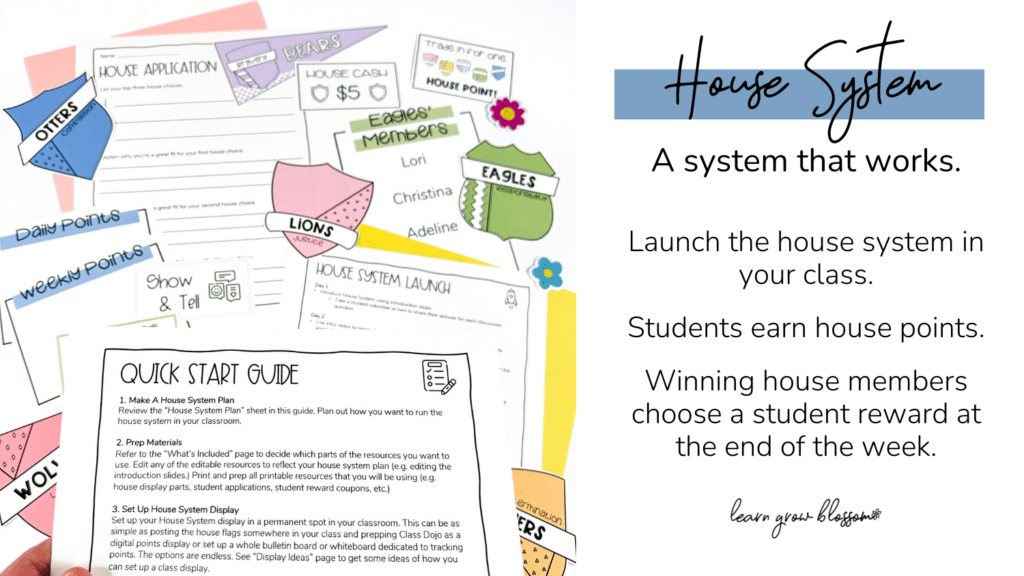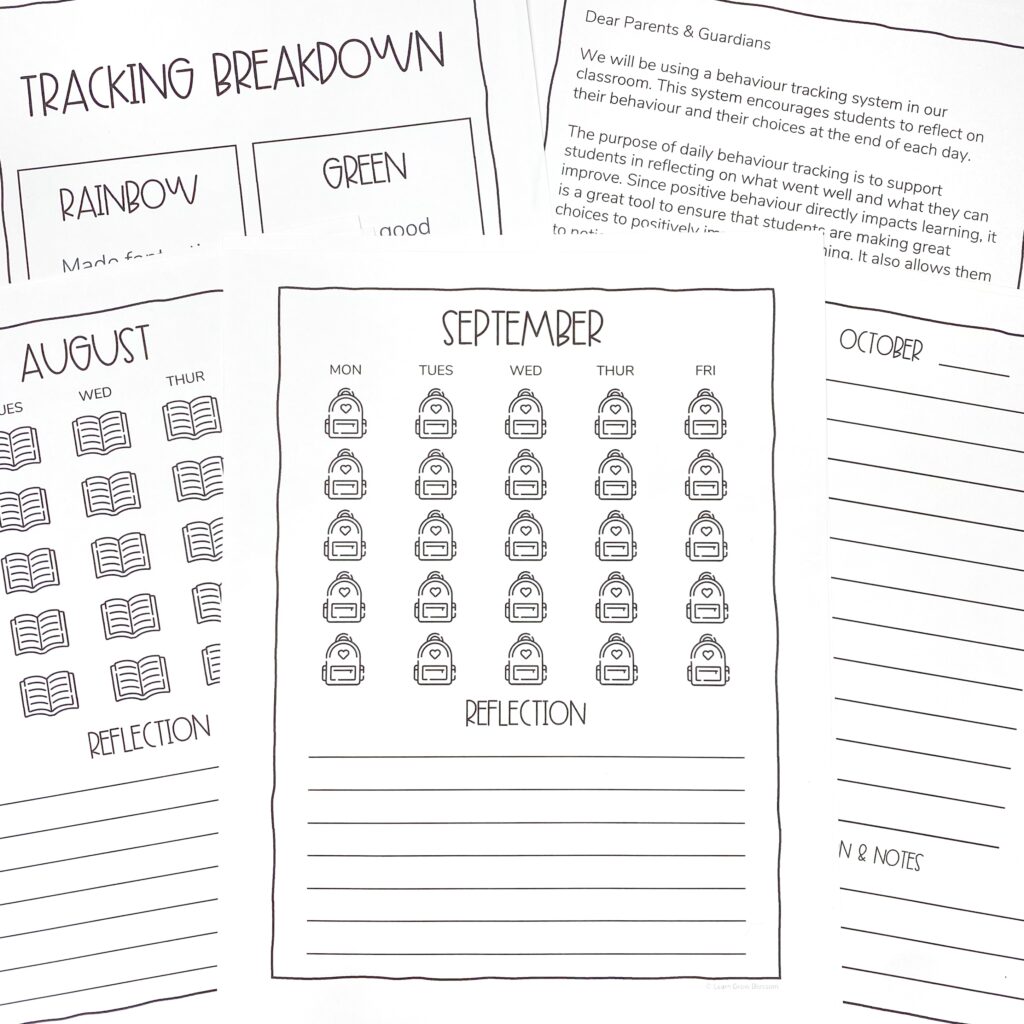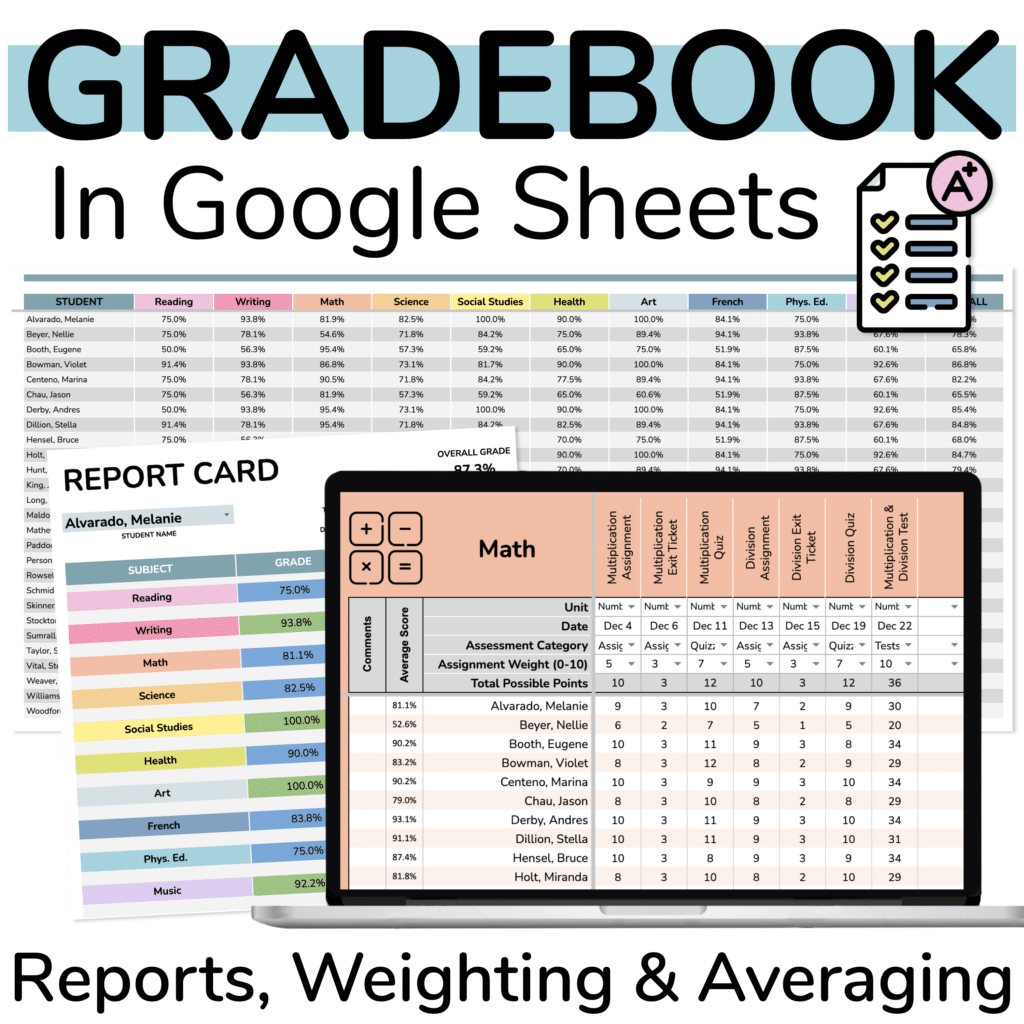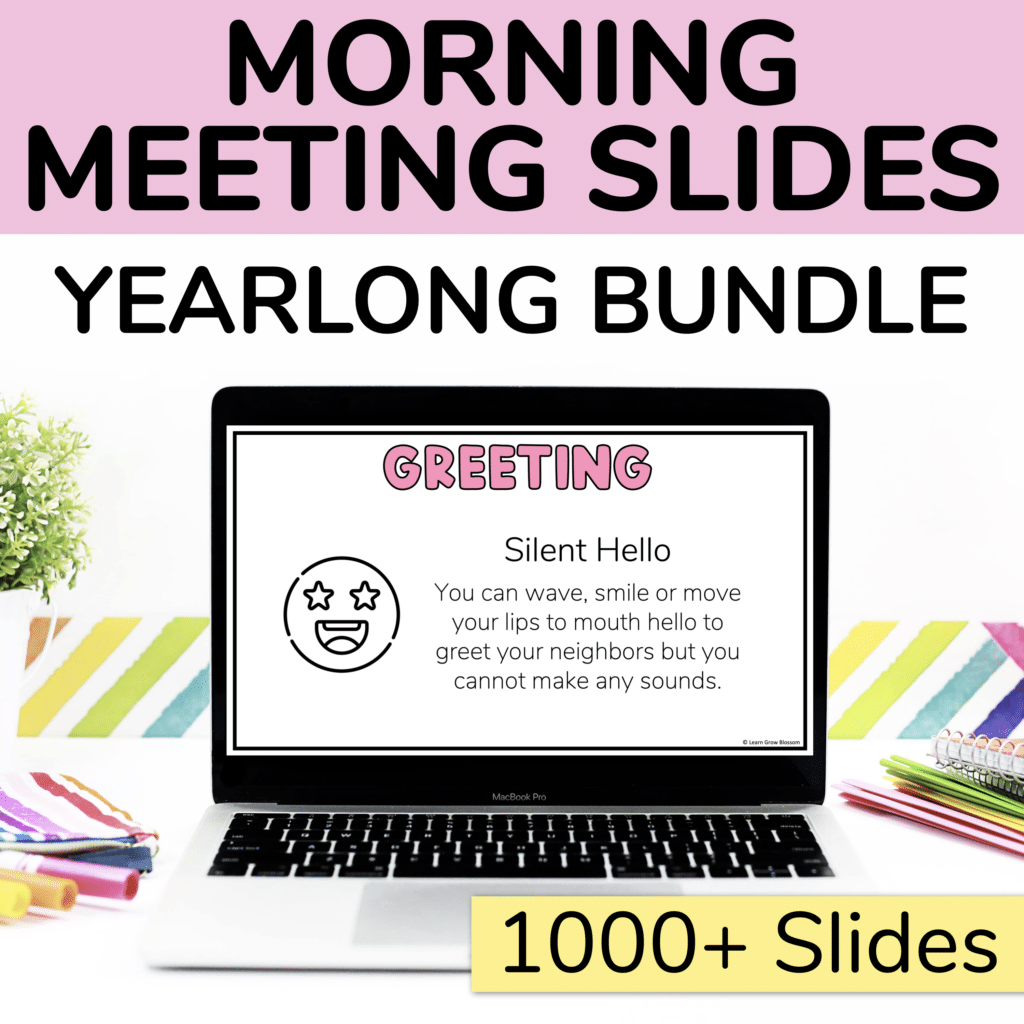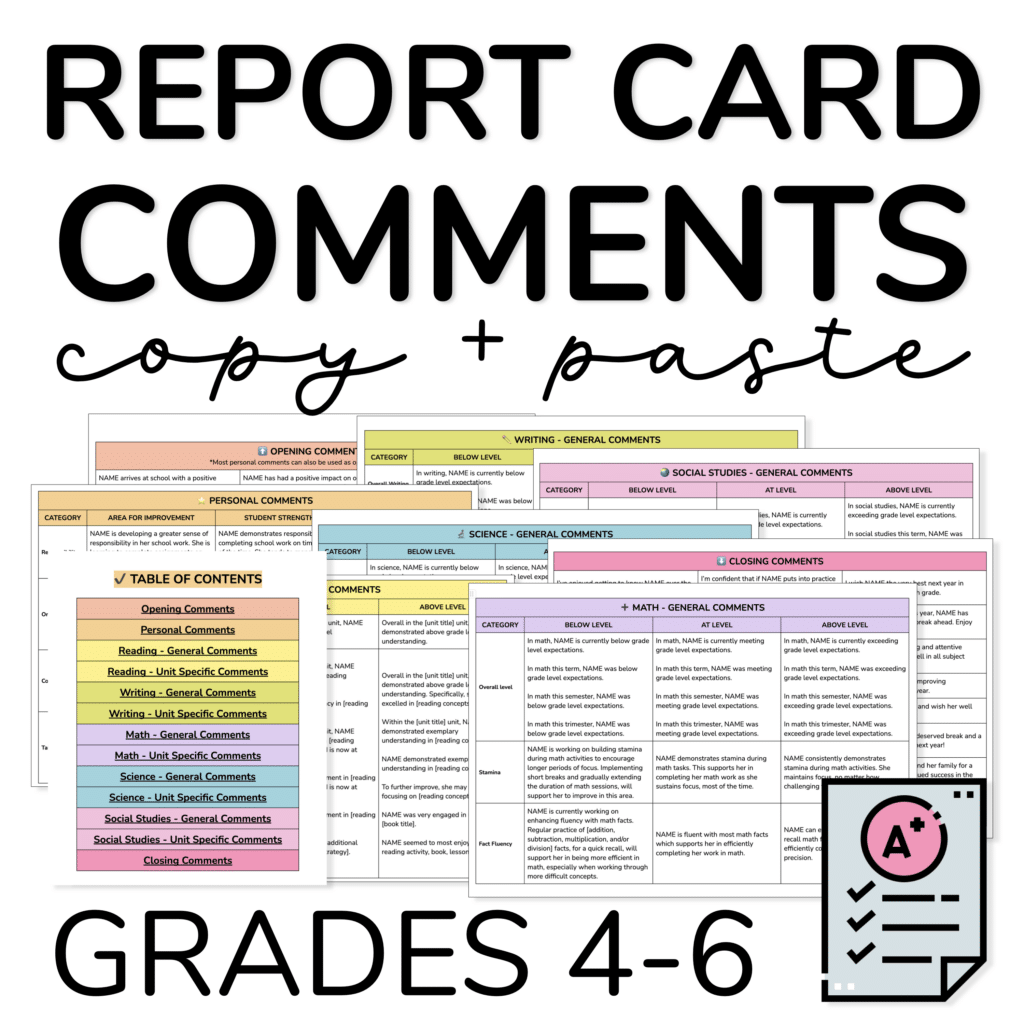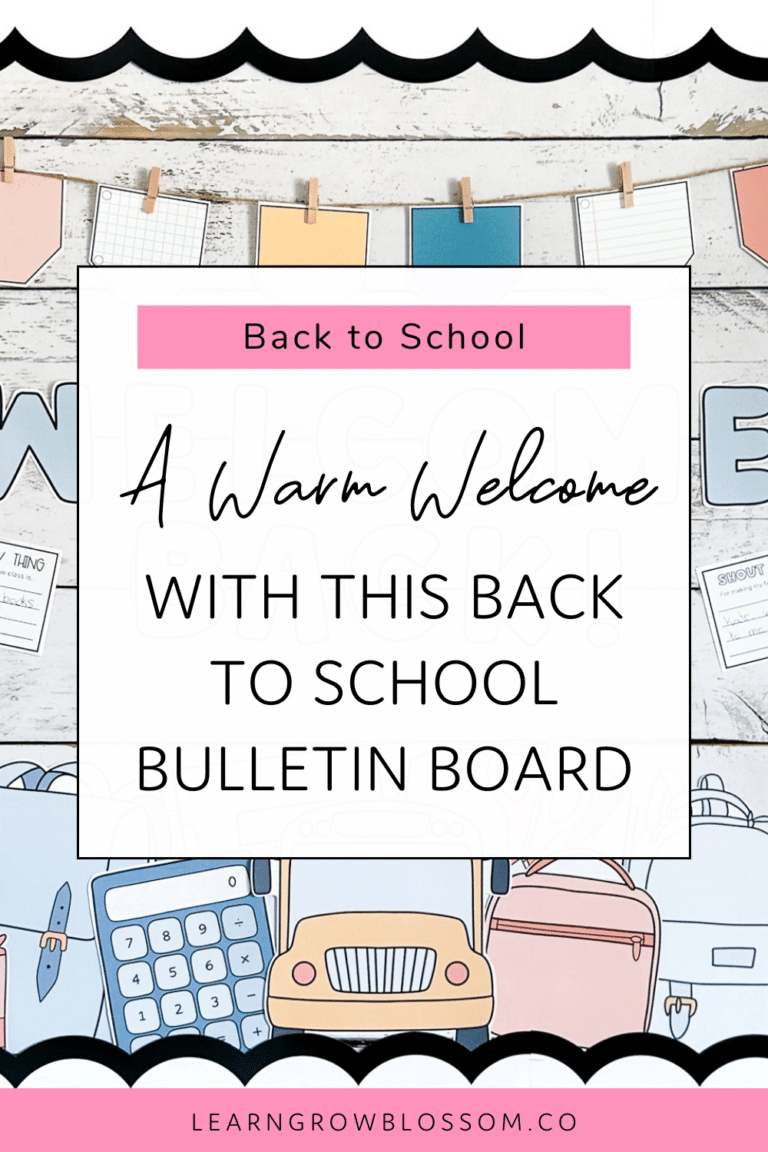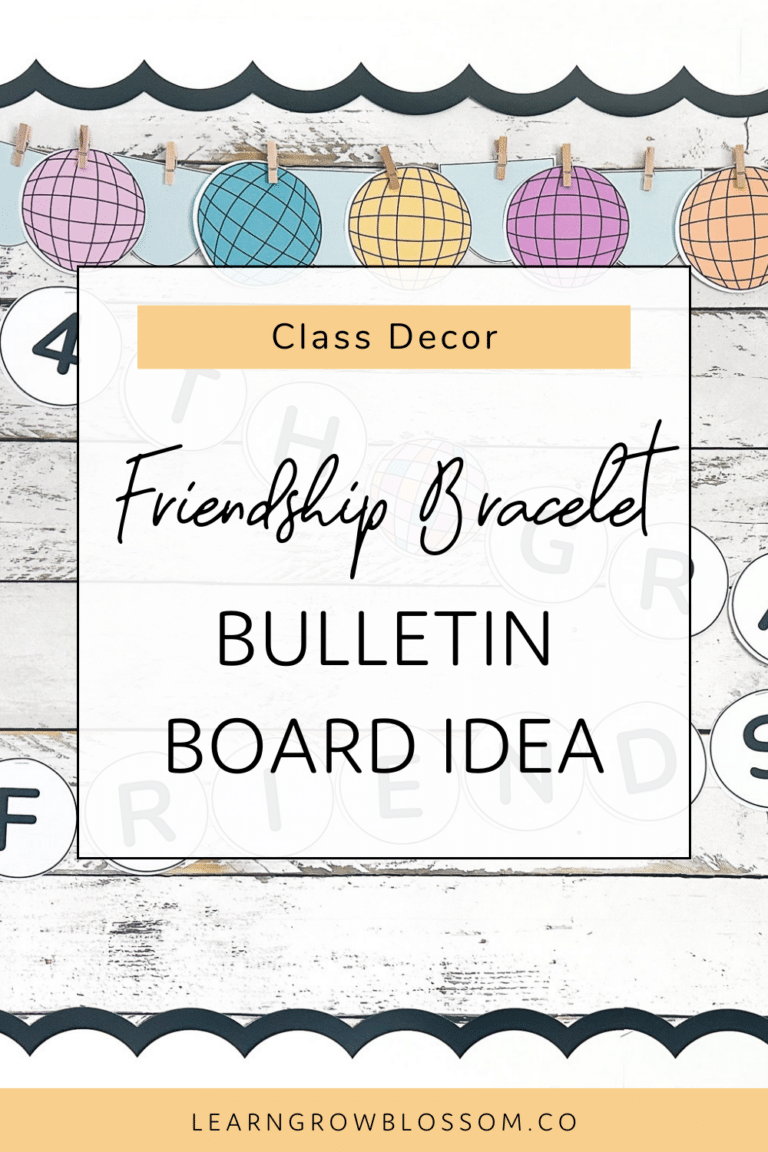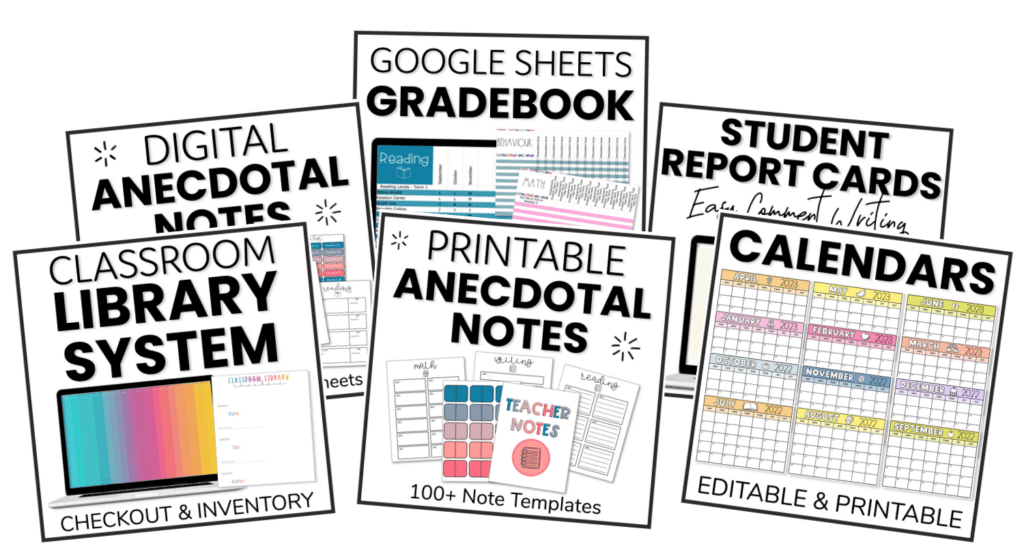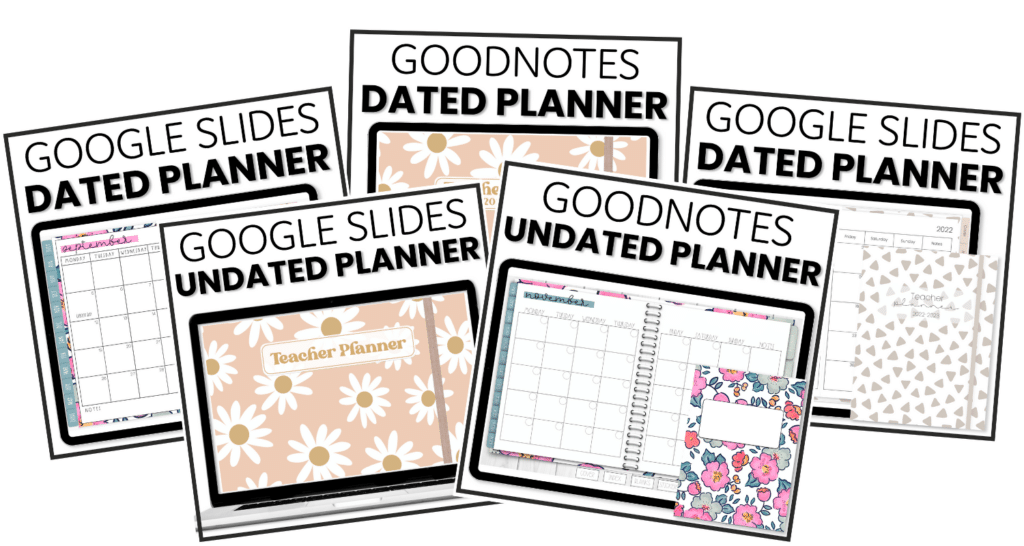Using a Class Dojo reward system can be a strong reinforcer in elementary. Get the details on how you can use a Class Dojo reward system to focus on positive reinforcement. After many years of tweaking this system, I’ve have landed on a way that contributes to a positive classroom environment and is also motivating to students.
Read to the end to learn more about how Class Dojo isn’t just a classroom management tool but also hosts a ton of features that support you in a smooth-running classroom.
And you know that’s what we’re all about around here.
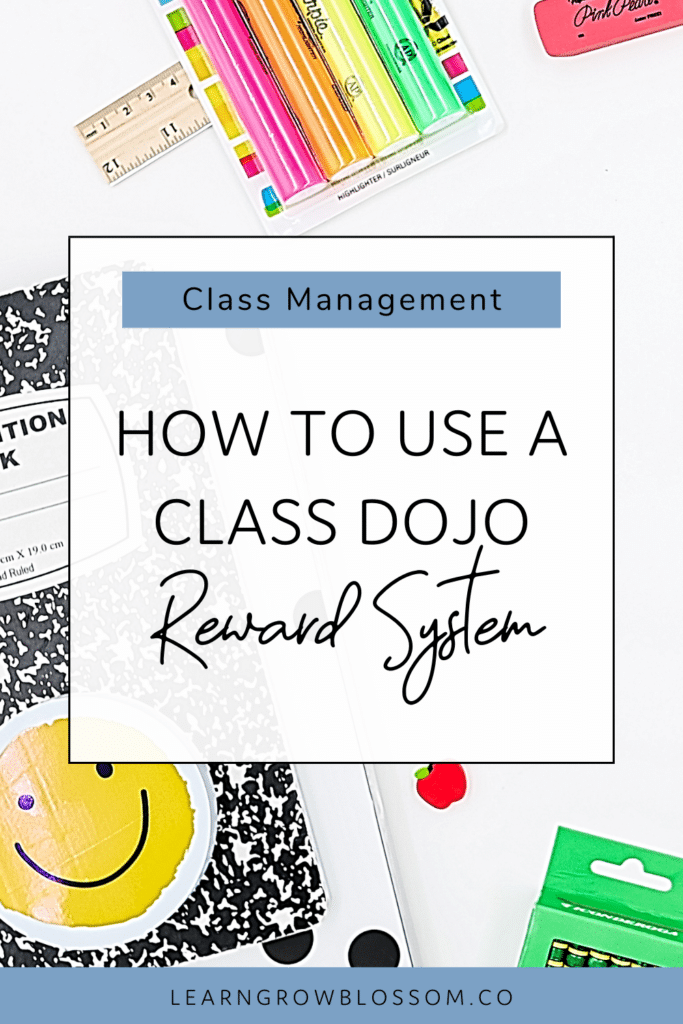
Earning Points
To set up Class Dojo, you will first consider what you’d like to add as positive behaviours that you’re looking to give points out for.
Since Class Dojo allows you to edit those skills, you can tailor them to behaviours that you’re working on improving as a class. New skills can constantly be added or removed, depending on the needs of your class at the time. The skills your students are focusing on will probably look very different at the beginning of the year compared to the end of the year.
For example, one particular year, my students were working on cleaning up more efficiently, freezing as soon as I said “freeze” and having an appropriate volume during seat work. Those skills were added to Class Dojo and students could earn points based on those skills.
Since we are a Leader in Me School, students could also earn points for using the 7 Habits within our Class Dojo reward system. That helped to reinforce their use of the habits but also helped students see where they are using the habits in their everyday lives. For example, earning a point for synergizing helped students see that they were using this habit when working well as a group.

When students have earned a Class Dojo point, it’s best to award that point immediately when they are displaying the behaviour since the reinforcer works best when it is occurs as close to the desired behaviour as possible.
When possible, tell students why they have earned a point. This connects the reinforcement to the behaviour and they (and their other classmates) will be more likely to show that behaviour in the future.
For added fun, ask students to give themselves a point after you tell them how they have earned it. They love being able to give themselves their own point by coming up to the Promethean Board or computer.
Class Dojo for Positive Reinforcement
Consider refraining from taking away Class Dojo points. Since awarding points is a way of acknowledging the effort students have put in, it’s best not to take them away, in my humble opinion. Positive reinforcement, if used consistently, is truly enough for a strong classroom management system.
If a student is exhibiting behaviour that needs to be addressed, there are other strategies that are more effective than taking away points. Those behaviour management strategies or tools should be distinct from the Class Dojo reward system. Using Class Dojo exclusively for reinforcing positive behaviour will make a big difference in terms of student behaviour.
Rewards
So what are the points for, anyway? Once students hit a predetermined number of points, they earn a reward. Most years, the goal in my class was for students to get to 30 points and then they would earn a reward. Some Class Dojo reward ideas are giving students coupons or low-cost rewards like fidgets from Amazon, stickers for your class sticker shop, etc.
Resetting Student Bubbles
Each time that students earn their reward they reset their bubble. Resetting bubbles once students hit that target number is best practice because it eliminates having all points displayed on the board. There are often discrepancies between student points and you don’t want it to be on public display that Owen has 209 points while Mitch has 34.
Point Discrepancies
Most classrooms have a few select students who have difficulty displaying desirable behaviour as often as their peers. Resetting bubbles is important especially for these students as we don’t want to damage their confidence or self-worth by having it displayed for all to see that they have fewer points than others.
However, it’s important to take note of any students who aren’t earning as many points as others. This is a good reminder to keep an extra eye on these students to “catch them” showing those desired behaviours. The more you can catch them and dole out that positive reinforcement, the more often you’ll see them make those positive choices.
Leadership Role Idea
Consider adding a leadership role where a student or students are responsible for giving out a point based on a specific behaviour. Within one of my group jobs, the student management team is responsible for dishing out points for acts of leadership that they saw that day.
At the end of the day, that group of students can give out a point to a student that they saw showing leadership within our classroom or the school. There are a few stipulations. They must tell that student why they give them a point and can’t choose the same student more than once.
Class Points
When using the Class Dojo reward system, it will automatically calculate a class points total. On top of rewarding students individually, you can also work on earning a class reward. Check out these whole class reward ideas.
To do this, set a class points goal, which might be 100, 250, or 500 Class Dojo points. You can either set the reward that students are working toward ahead of time and write it on the whiteboard as a motivator or you can have students vote on the reward they would like once they’ve earned it.
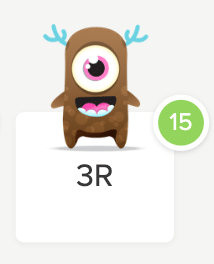
Similar to individual student points, you can set goals on things to improve as a class and give out points when students master it. One year, my students were having difficulty using appropriate volume, especially during math rotations. I gave out class points when all students were using an appropriate volume, even if it was just for a few minutes. This helped them to recognize what appropriate volume was and to be motivated to continue to display this behaviour.
The important part of giving class points is making sure that all students are doing what is expected (to the best of their ability) as all students are reinforced for that behaviour when you give a class point.
More Class Dojo Ideas
Nowadays, Class Dojo is so much more than just a reward system. There are classroom management tools, galore! There are parent communication features, social emotional learning lessons, and more. There are a ton of classroom tools and features so I’ll go over a few of my favourites and leave the rest for you to explore.
- Timer
- Random
- Group Maker
- Directions
- Big Ideas
In conclusion, a Class Dojo reward system can be a powerful classroom management tool in your elementary classroom. Through a focus on positive reinforcement and clear expectations with students, it contributes to a positive learning environment.
By adapting and fine-tuning strategies, you can motivate and engage our students while fostering a strong sense of community. Remember, too, that Class Dojo is more than just a classroom management tool—it has a ton of great features to explore.
House System + Class Dojo Reward System
Looking for another way to use Class Dojo in your classroom? Try using it to give out house points within a house system. It’s by far the most engaging classroom management system that I’ve used with upper elementary students.
Within the house system, students will be sorted into houses and earn points as a house. It’s a powerful way to build class community on top of it being a highly motivating classroom management system.
Class Dojo can be used to tally up house points and the winning house earns a reward each week. To add to that family feeling, houses write a house agreement and host monthly meetings to learn how they can work together and best support each other. A House System and Class Dojo is a class management dream team!
Check out The Complete House System to get started on your solid classroom management strategy.







